Top 11 Indoor Plants for Clean Air: Breathe Like Magic!
Breathe easy, these 11 houseplants do more than just decorate, they detox your air!
If you’ve ever walked into a room and felt the air was heavy, stale or even slightly musty, you’re not alone, With modern homes sealed tight for energy efficiency, indoor air can be up to 5 times more polluted than outdoor air, according to the EPA.
That’s where nature steps in.
The question you’re here for, Top 11 indoor plants for clean air, isn’t just a pretty phrase. These humble houseplants act as natural air purifiers, helping reduce toxins, control humidity, and improve your quality of life. In this article, we’ll walk through the Top 11 Indoor Plants for Clean Air, including care tips, benefits, and why each one deserves a spot in your home.
Also read – How to Create a Sleep Sanctuary at Home
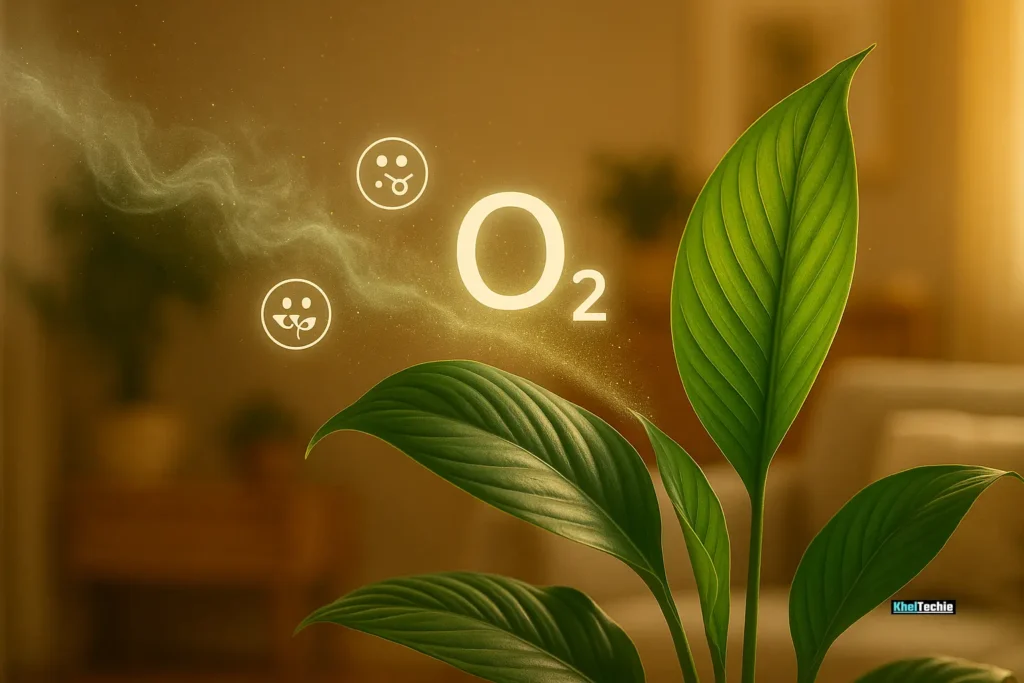
What Indoor Plants for Clean Air actually mean?
Think of these plants as green superheroes. Each one specializes in absorbing common indoor toxins like formaldehyde, benzene, and carbon monoxide. They photosynthesize (convert CO₂ to O₂) and also release moisture, creating a microclimate of wellness. In short, they’re the healthiest roommates you’ll ever have.
They absorb some common toxins like:
- Formaldehyde
- Benzene
- Trichloroethylene
- Xylene
- Ammonia
- Carbon monoxide
Many of these plants were first identified in NASA’s 1989 Clean Air Study, which explored how indoor greenery could support life in space stations. Today, those findings are still relevant for our homes and offices.
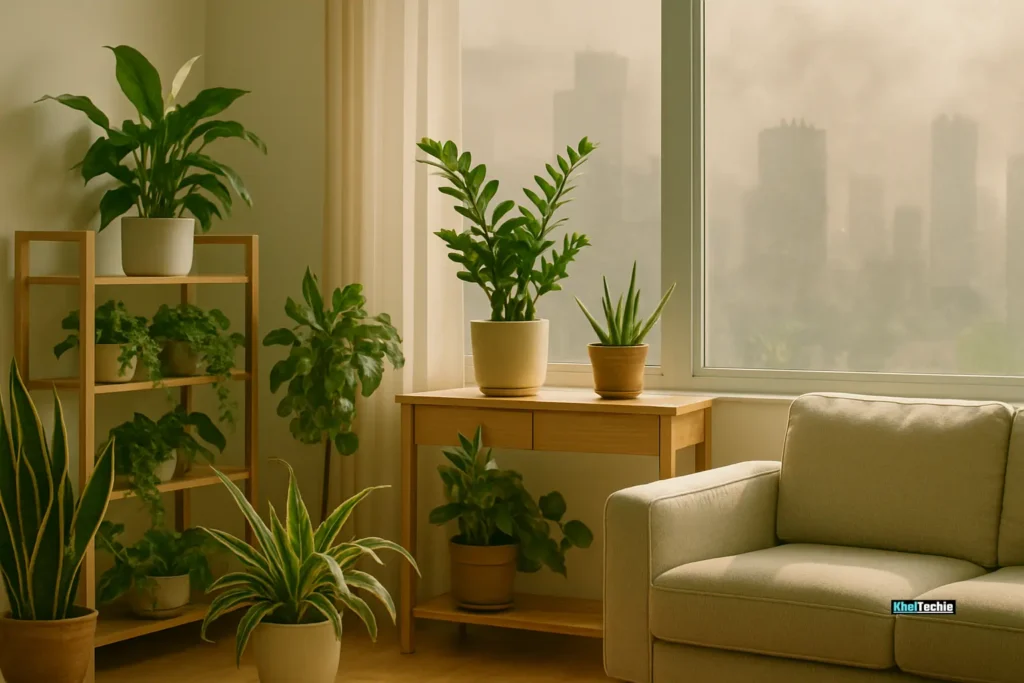
Why Indoor Plants Matters for Clean Air?
Thinking indoor plants are just decor? Think again. Recent science is showing they may have serious health benefits.
First off, an Indo–U.S. clinical study is giving air purifiers to heart-failure patients in Kerala with plans to reach 200 homes in hopes of reducing air-related complications and hospital visits. That’s a powerful sign that cleaner indoor air isn’t just comfort, it’s potentially life-saving infrastructure.
Then there’s the compelling 2025 review in Annali dell’Igiene, It highlights that exposure to indoor greenery can reduce stress, lower blood pressure, decrease inflammation, and improve mental clarity. Researchers stress that indoor plants shouldn’t be an afterthought, they belong in healthcare settings, offices, even city housing.
According to the Environmental Protection Agency (EPA), Americans people spend maximum of 90% of their time indoors, making indoor air quality crucial for health. Poor air quality has been linked to:
- Headaches
- Fatigue
- Respiratory issues
- Allergies
So, how do plants help?
They work like tiny living filters. Through photosynthesis, plants absorb carbon dioxide and release oxygen. But many also remove volatile organic compounds (VOCs) from the air, essentially acting as natural air purifiers And here’s the best part, most of them are low-maintenance and affordable.
So the next time you water that peace lily or adjust your fern, you’re doing more than sprucing up your space. You’re creating an indoor mini-ecosystem that may support heart health, enhance mood, and even become part of future public-health strategies. In short, these green companions aren’t just nice to have, they matter.
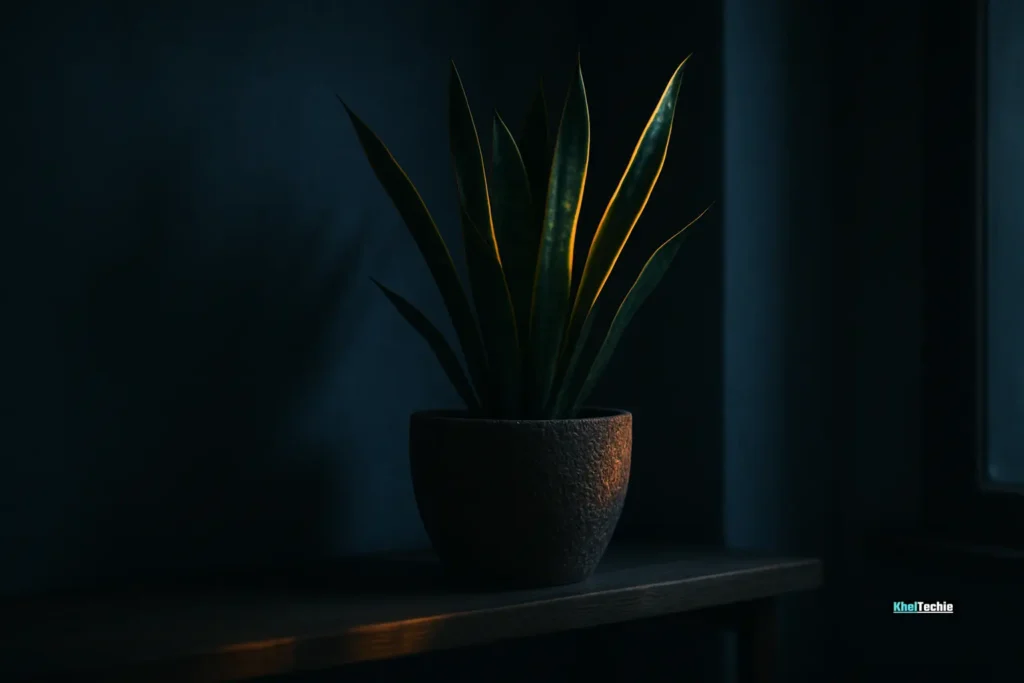
The Top 11 Indoor Plants for Clean Air With Care Tips
Let’s dive into the full list including what they clean, how easy they are to care for and where to place them in your home.
| Rank | Plant Name | Best For Filtering | Light Needs | Pet-Friendly? |
|---|---|---|---|---|
| 1 | Snake Plant | Formaldehyde, CO | Low to medium | No |
| 2 | Peace Lily | Benzene, Formaldehyde, CO | Medium to bright | No |
| 3 | Spider Plant | Formaldehyde, Xylene | Bright indirect | Yes |
| 4 | Aloe Vera | Formaldehyde, Benzene | Bright direct | No |
| 5 | English Ivy | Mold, Benzene, Trichloroethylene | Medium to bright | No |
| 6 | Bamboo Palm | Benzene, Trichloroethylene | Indirect bright | Yes |
| 7 | Dracaena | Xylene, Toluene | Bright indirect | No |
| 8 | Rubber Plant | Formaldehyde | Bright indirect | No |
| 9 | Boston Fern | Xylene, Formaldehyde | High humidity | No |
| 10 | Weeping Fig | Formaldehyde, Xylene | Bright indirect | No |
| 11 | Chinese Evergreen | Formaldehyde, Benzene | Low to medium | No |
1. Snake Plant (Sansevieria trifasciata)
Why It’s Great: Known as the bedroom plant, it releases oxygen at night and thrives in low light.
Care Tips:
- Water every 2–3 weeks
- Prefers indirect light but survives in darkness
- Tolerates neglect
Toxins Removed: Formaldehyde, CO
Pet Warning: Toxic to cats/dogs
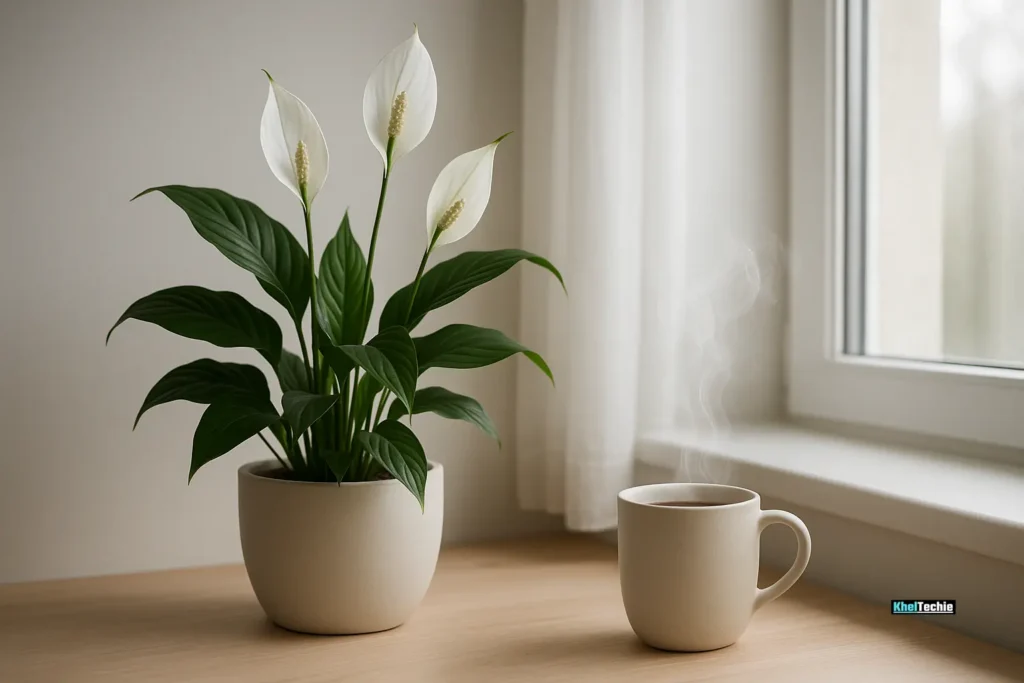
2. Peace Lily (Spathiphyllum)
Why It’s Great: Blooms indoors and removes mold spores from the air.
Care Tips:
- Keep soil moist but not soggy
- Prefers medium to bright indirect light
- Wilted leaves mean it needs water
Toxins Removed: Benzene, formaldehyde, CO
Pet Warning: Toxic to pets

3. Spider Plant (Chlorophytum comosum)
Why It’s Great: Kids and pet-friendly and super effective at filtering formaldehyde.
Care Tips:
- Thrives in bright indirect light
- Water once a week
- Produces baby spiderettes you can propagate
Toxins Removed: Formaldehyde, xylene
Pet Friendly: Yes
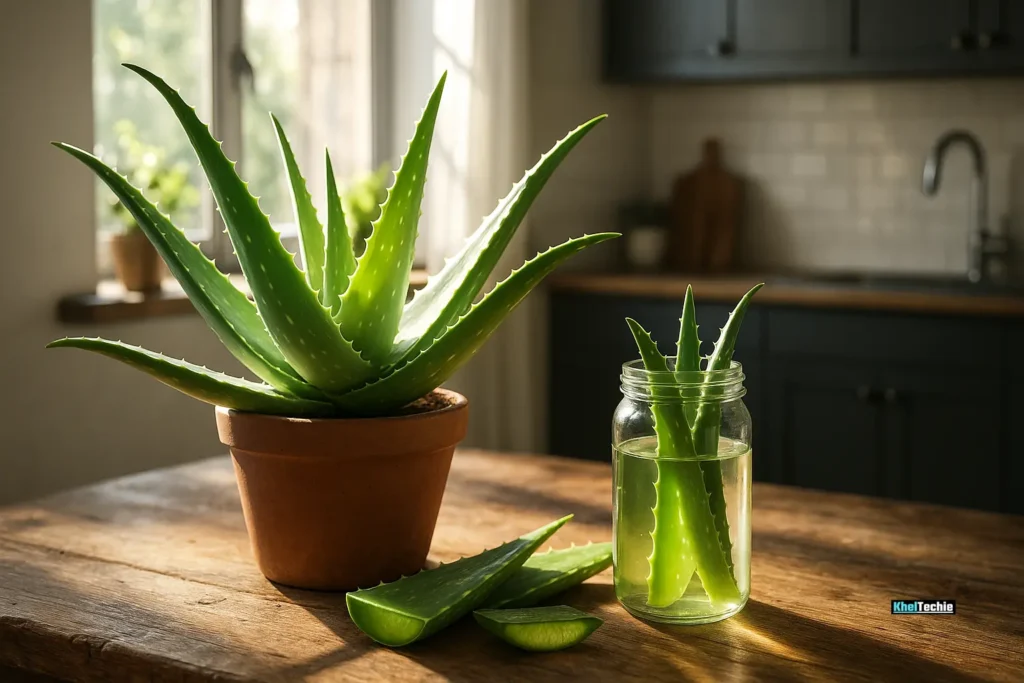
4. Aloe Vera
Why It’s Great: Heals skin and cleanses the air, a two-in-one powerhouse.
Care Tips:
- Needs lots of sun
- Water only when soil is completely dry
- Brown leaf tips = overwatering
Toxins Removed: Formaldehyde, benzene
Pet Warning: Toxic to pets

5. English Ivy (Hedera helix)
Why It’s Great: Reduces airborne fecal particles (yes, really!) and mold.
Care Tips:
- Likes cool temperatures
- Keep soil evenly moist
- Prune regularly to encourage growth
Toxins Removed: Mold, benzene, trichloroethylene
Pet Warning: Toxic to pets
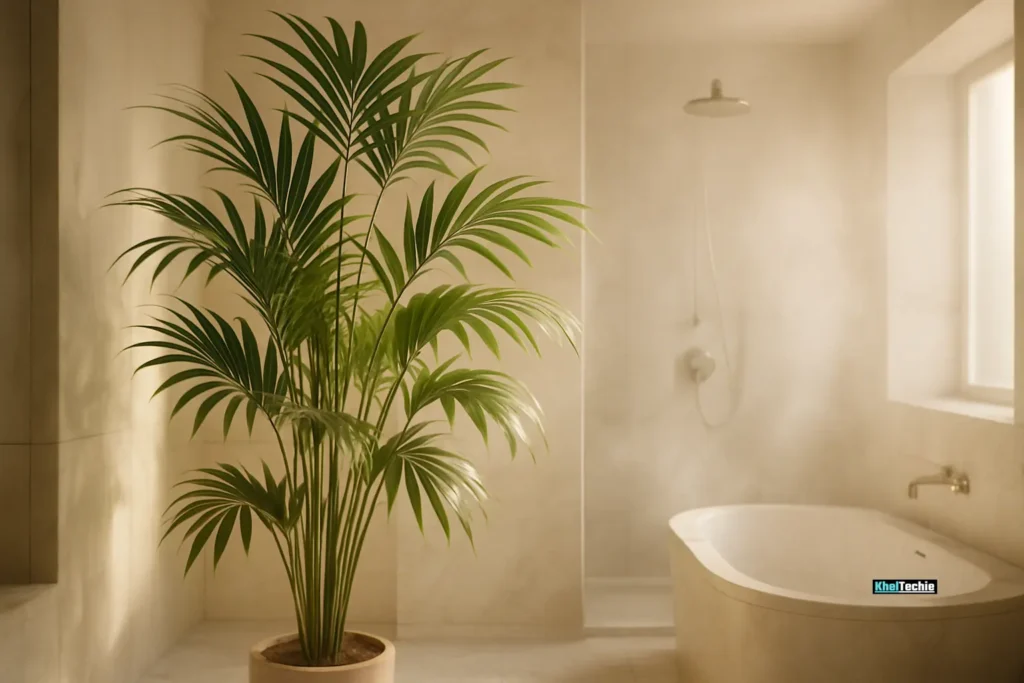
6. Bamboo Palm (Chamaedorea seifrizii)
Why It’s Great: Adds tropical vibes and filters benzene and trichloroethylene.
Care Tips:
- Likes humid environments
- Keep soil moist
- Ideal near bathrooms or kitchens
Toxins Removed: Benzene, trichloroethylene
Pet Friendly: Yes
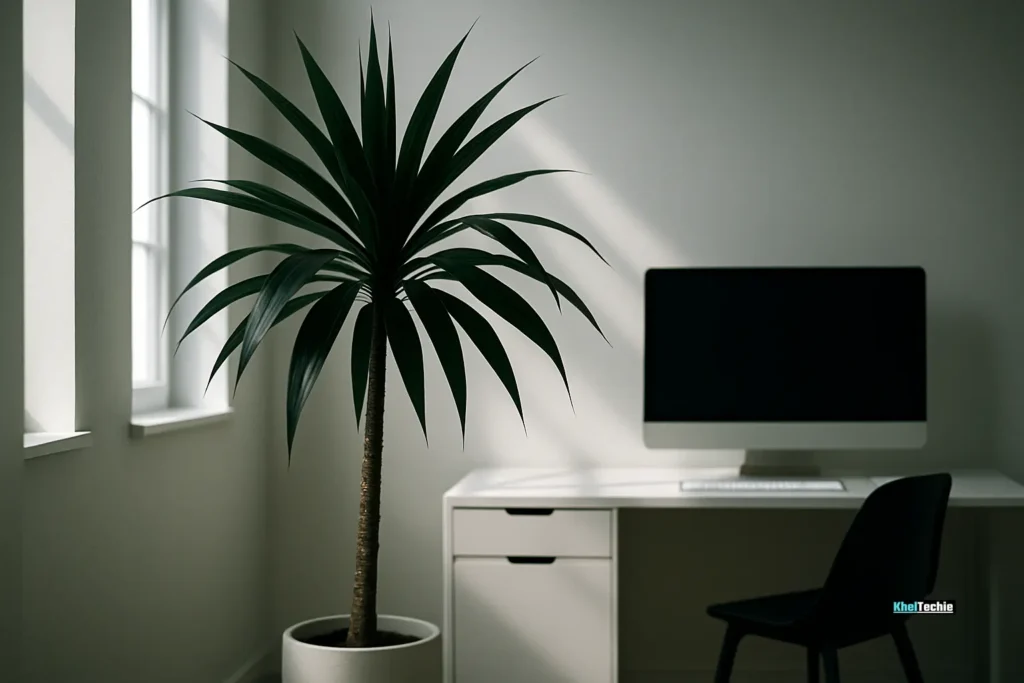
7. Dracaena
Why It’s Great: Comes in many varieties and tackles tough VOCs like xylene.
Care Tips:
- Water when top inch dries out
- Avoid tap water (use filtered)
- Sensitive to fluoride
Toxins Removed: Xylene, toluene
Pet Warning: Toxic to pets
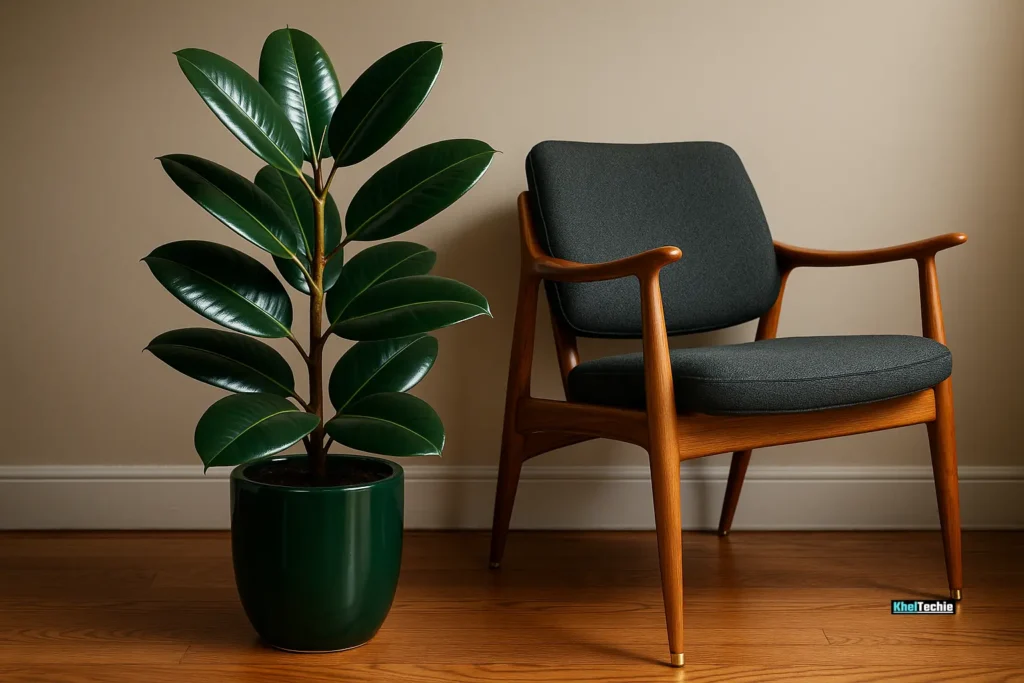
8. Rubber Plant (Ficus elastica)
Why It’s Great: Glossy leaves absorb formaldehyde and add bold style.
Care Tips:
- Likes bright, indirect light
- Wipe leaves weekly
- Don’t move it around, it hates change
Toxins Removed: Formaldehyde
Pet Warning: Toxic to pets
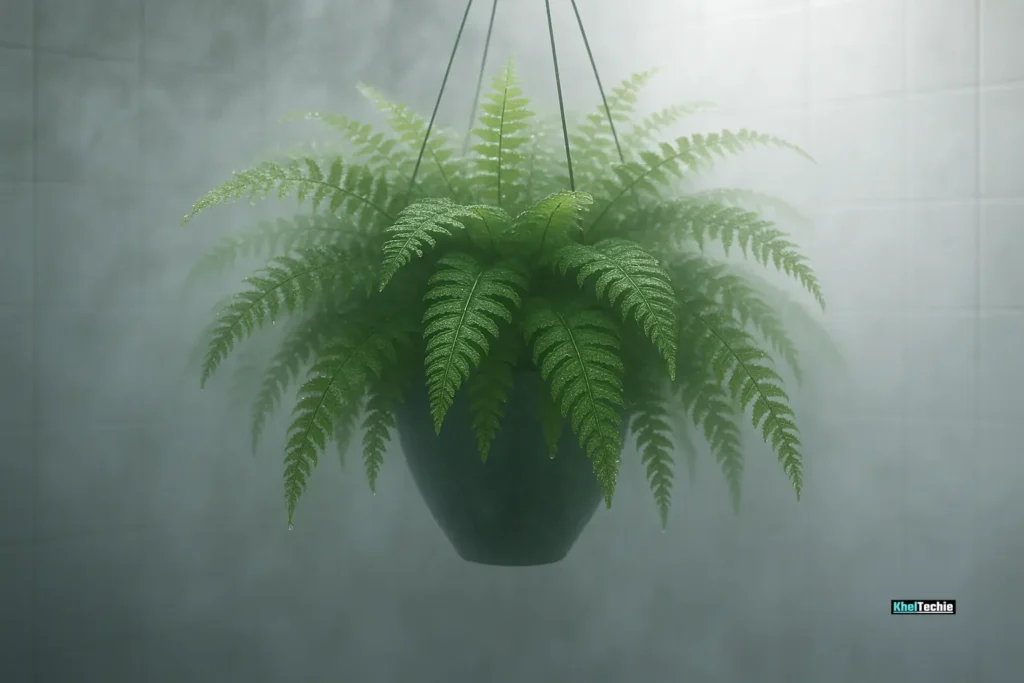
9. Boston Fern (Nephrolepis exaltata)
Why It’s Great: Humidifier and air cleaner in one, perfect for bathrooms.
Care Tips:
- Needs high humidity
- Mist daily
- Keep soil consistently damp
Toxins Removed: Xylene, formaldehyde
Pet Warning: Toxic to pets
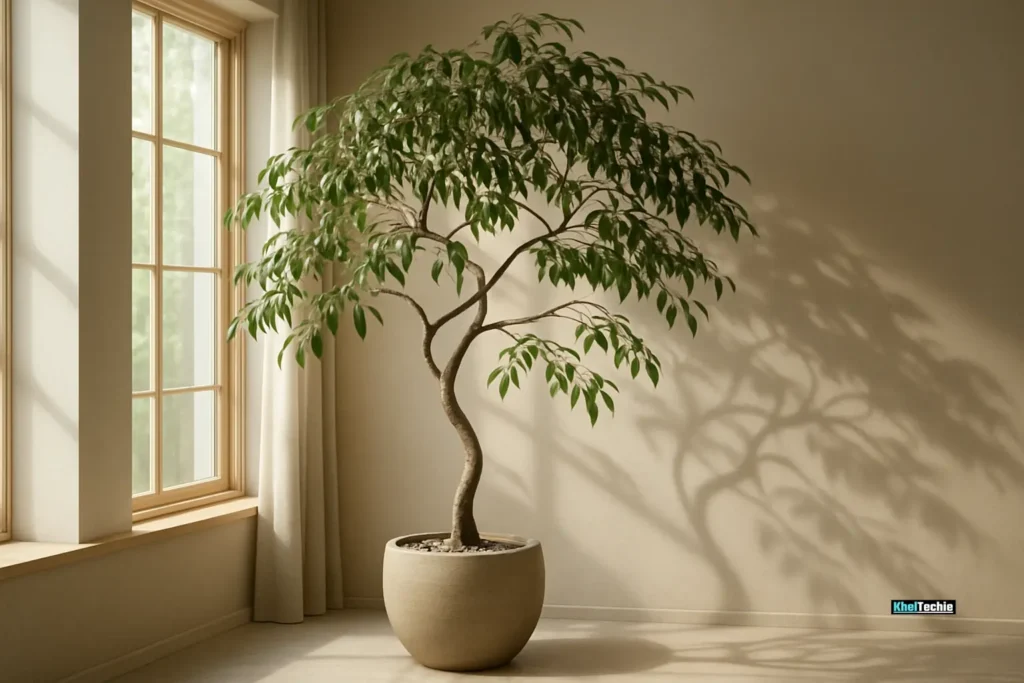
10. Weeping Fig (Ficus benjamina)
Why It’s Great: Tall, elegant tree that purifies formaldehyde and xylene.
Care Tips:
- Sensitive to drafts
- Rotate weekly for even growth
- Drop leaves if moved frequently
Toxins Removed: Formaldehyde, xylene
Pet Warning: Toxic to pets
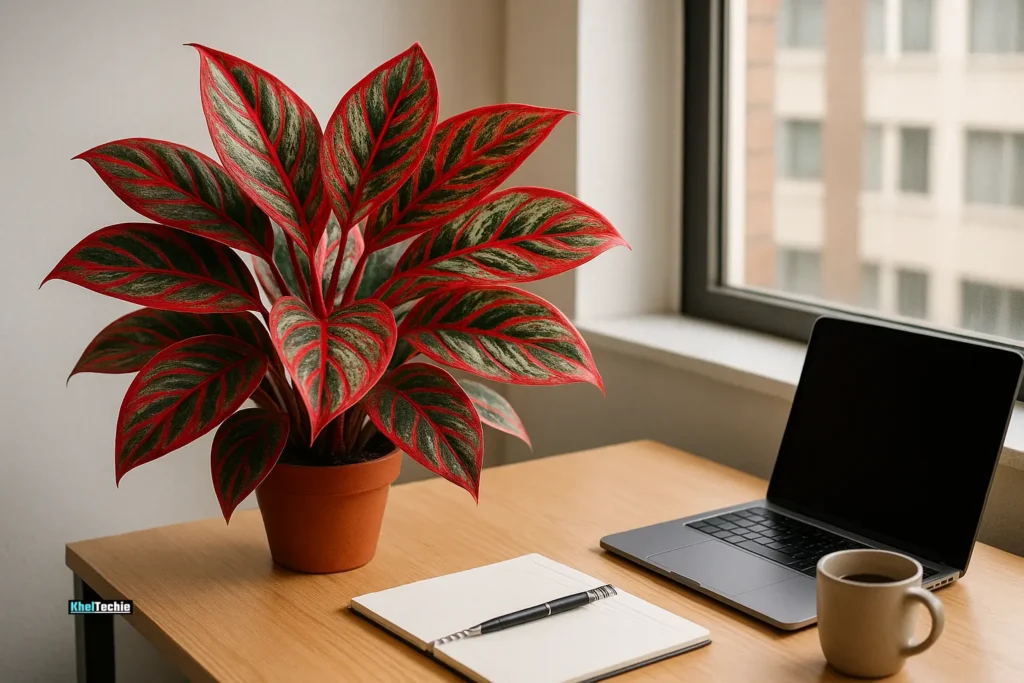
11. Chinese Evergreen (Aglaonema)
Why It’s Great: One of the easiest plants to keep alive, ideal for beginners.
Care Tips:
- Tolerates low light
- Water once every 1–2 weeks
- Comes in many colorful varieties
Toxins Removed: Formaldehyde, benzene
Pet Warning: Toxic to pets
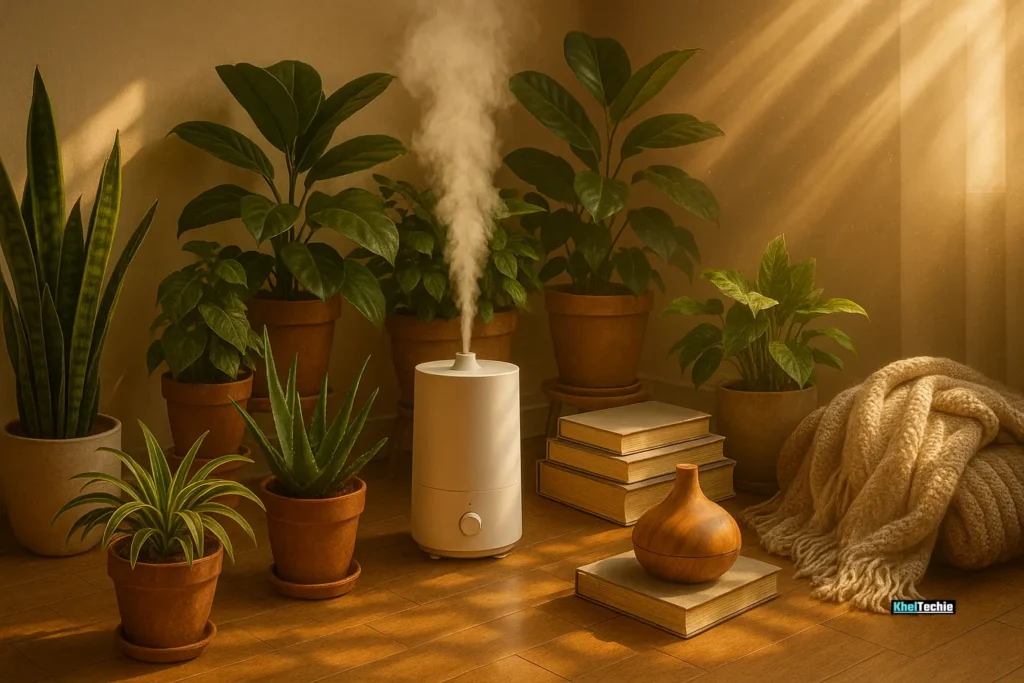
How to Set Up an Indoor Plant Clean Air Zone Step-by-Step
Step 1: Know Your Space & Light Conditions
Not all rooms get equal sunlight. Some plants thrive in bright, indirect light & others prefer shade.
| Plant Name | Light Preference |
|---|---|
| Snake Plant | Low to medium |
| Peace Lily | Medium to bright indirect |
| Aloe Vera | Bright, direct |
Step 2: Choose Based on Air-Purifying Power
Some plants specialize in removing specific toxins. For example:
- Spider Plant – Removes formaldehyde and xylene.
- English Ivy – Filters benzene and mold spores.
Step 3: Consider Pet Safety
Some plants are toxic to pets. If you have cats or dogs, avoid:
- Lilies
- Dieffenbachia
- ZZ Plant
Instead, opt for pet-safe options like:
- Areca Palm
- Peperomia
- Cast Iron Plant
Step 4: Water Wisely
Overwatering is the number 1 killer of indoor plants. Most need watering once a week or when the top inch of soil feels dry.
Use filtered water if possible, some plants are sensitive to fluoride and chlorine.
Step 5: Group Plants Together
Plants grouped together create a microclimate that boosts humidity and air purification. Plus, they look great together!

Common Mistakes to Avoid When Using Indoor Plants for Air Purification
- Buying too many plants at once
Start small. Too many plants can raise humidity and cause mold growth if not managed. - Ignoring drainage needs
Make sure pots have drainage holes to prevent root rot. - Neglecting to dust leaves
Dust blocks pores on leaves, reducing their air-purifying power. Wipe them down weekly. - Using plastic pots without liners
Plastic traps moisture. Use terracotta or add a liner to allow airflow. - Forgetting about soil maintenance
Replace soil every 1–2 years. Old soil loses nutrients and may harbor pests.
Also read – Top 10 Micro-Habits for Daily Wellness Success
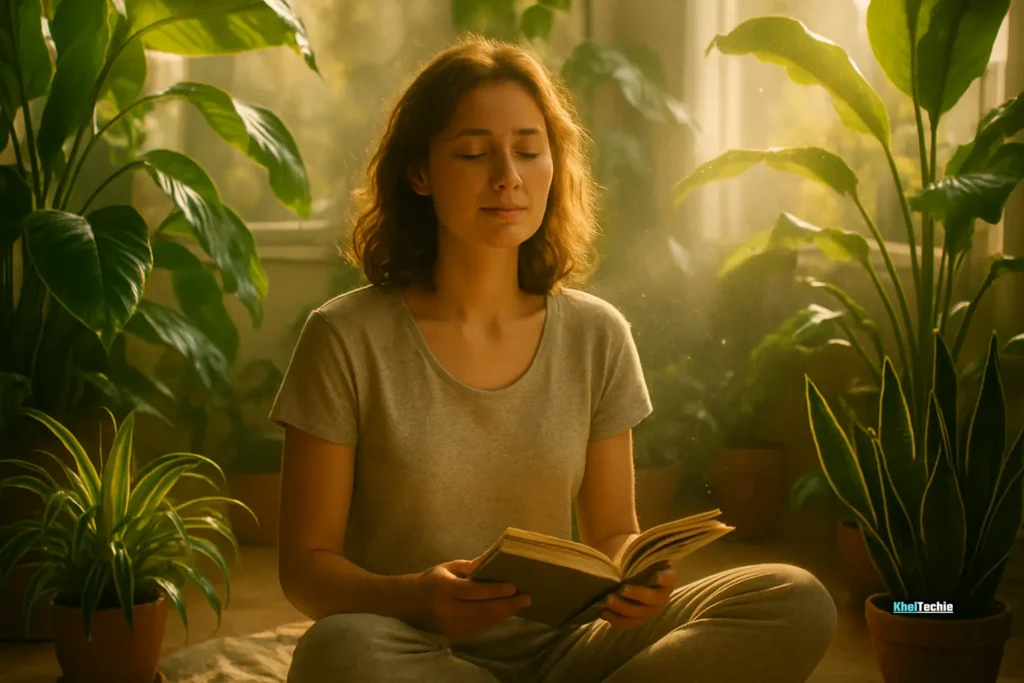
Conclusion: Breathe Easier, Live Healthier
You don’t need a fancy air purifier, Mother Nature has already given you the solution air-purifying plants. Whether you’re in a city apartment or a cozy home, these top 11 indoor plants for clean air are low-effort, high-impact additions that enhance both your health and decor, it’s about creating a healthier, happier environment, From boosting mood to filtering toxins, these plants offer a simple, natural way to breathe easier.
Whether you’re a seasoned plant parent or a total newbie, there’s a green ally waiting for you. Got Questions? Drop them below or share your favorite air-purifying plant in the comments and if you found this guide helpful, don’t forget to share it with friends who might want to freshen up their home!
🌱 Happy planting!
FAQs
Do indoor plants actually improve air quality?
Yes! According to NASA’s Clean Air Study, certain plants significantly reduce levels of formaldehyde, benzene, and other VOCs in sealed environments.
How many plants do I need per room?
NASA recommends one large plant per 100 sq ft for optimal air purification.
Which plant is best for bedrooms?
Snake Plant and Aloe Vera both release oxygen at night, making them ideal for bedrooms.
Are there any air-purifying plants safe for pets?
Yes! Try Areca Palm, Peperomia, or Calathea, all non-toxic to pets.
Do air-purifying plants require special soil?
No, but using activated charcoal in the soil mix can enhance filtration.
Should I mist my air-purifying plants?
Only if they come from humid climates (like ferns or palms). Others like snake plants don’t need misting.
Do air-purifying plants need fertilizer?
Yes, during growing season (spring and summer), use a balanced liquid fertilizer every 4–6 weeks.
Can I grow air-purifying plants under LED lights?
Yes! Many plants like pothos and snake plant thrive under LED grow lights.
What’s the easiest air-purifying plant for beginners?
Pothos and Snake Plant top the list. They’re hardy and require minimal care.
How long does it take to see benefits?
You’ll notice humidity improvements within days, and air quality changes within weeks, especially if previously polluted.
Do I need sunlight for these plants to purify air?
Most need indirect light. No light = no photosynthesis = no purification.




